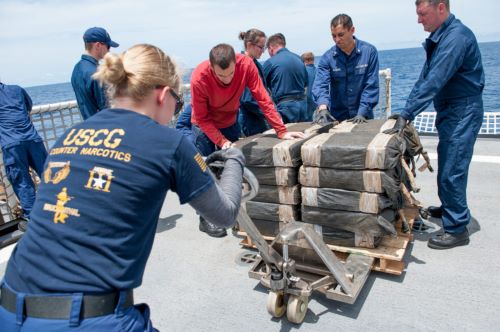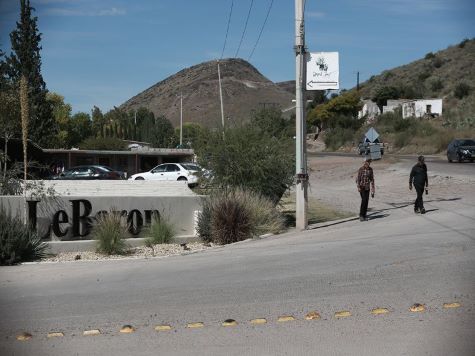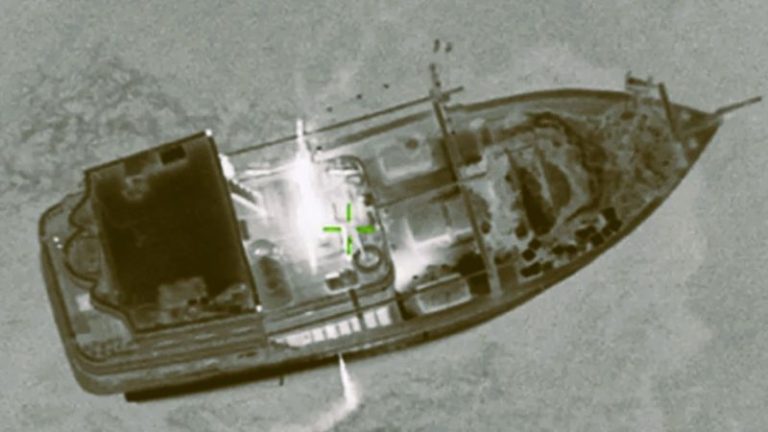

The drug war did not fail because its goals were wrong. It failed because its tools were blunt, its vision short-sighted, and its victims, too often, unseen.

By Matthew A. McIntosh
Public Historian
Brewminate
Exported War, Imported Consequences
It began as a domestic policy. In 1971, President Richard Nixon declared drug abuse “public enemy number one” and launched a campaign that would come to be known as the War on Drugs. What started as a political maneuver to combat rising addiction and unrest in the United States would eventually sprawl far beyond U.S. borders. In Latin America, it took on a more militarized, intrusive character, one that continues to shape politics, economies, and lives decades later.
The war was not just waged on substances. It was fought on land, in streets, through prisons and police departments, across jungles and city blocks. It left behind bodies and policies, surveillance regimes and collapsed communities. While American officials spoke of eradicating supply and curbing crime, Latin American countries bore the brunt of the violence and instability.
Now, more than fifty years since its declaration, the legacy of the U.S. drug war has become impossible to disentangle from the ongoing crises of corruption, migration, and militarization that persist across the hemisphere.
Colombia: A Laboratory of Militarized Strategy
Colombia became ground zero for U.S. drug war interventions in the 1980s and 1990s. The logic was simple: crush production at the source. Under Plan Colombia, which began formally in 2000, the U.S. funneled more than $10 billion into the country over two decades, funding aerial coca eradication programs, police militarization, and intelligence-sharing efforts.
The program succeeded in reducing coca cultivation in certain regions for brief periods. But it also displaced entire communities, poisoned farmland, and deepened the civil conflict between the Colombian state, leftist guerrillas, and paramilitary forces. Civilians often found themselves caught in the crossfire or labeled as insurgents.
Despite decades of U.S. support, Colombia remains one of the world’s largest producers of cocaine. Coca crops have resurged in recent years, particularly after the 2016 peace deal between the government and FARC rebels. Many farmers, lacking economic alternatives and faced with broken state promises of development, returned to coca cultivation to survive.
The drug war did not eliminate the problem. It just changed the terms of engagement.
Mexico: Cartels, Corruption, and an Unending Battle

If Colombia was the first front, Mexico became the next. Beginning in the mid-2000s, the Mexican government, under pressure from the United States and its own domestic crisis, launched an all-out war on cartels. President Felipe Calderón deployed tens of thousands of troops and police in an effort to dismantle powerful trafficking organizations.
The result was a dramatic fragmentation of criminal groups, a sharp escalation in violence, and the creation of new, more agile cartels that diversified into extortion, kidnapping, and human trafficking. By 2024, Mexico’s death toll from drug war-related violence had surpassed 400,000. Tens of thousands more remain missing.
The U.S. played a central role through initiatives like the Mérida Initiative, which provided military aid and surveillance technology. But with limited oversight and endemic corruption, many of these tools ended up in the hands of criminal groups or were used by state forces to violate human rights.
American consumption fueled the trade. American weapons fueled the violence. Yet the social cost remained firmly on the southern side of the border.
Central America: Spillover and Collapse
As pressure increased in Colombia and Mexico, trafficking routes shifted through Central America. Countries like Honduras, El Salvador, and Guatemala became major transshipment corridors, with cartels exploiting weak institutions and poorly equipped police forces.
The violence in these countries became systemic. Entire regions fell under the control of criminal organizations. Politicians were bought, judges were threatened, and young people faced a stark choice between joining a gang or fleeing their country.
Mass migration from the Northern Triangle has been one of the most visible consequences. In U.S. policy debates, this migration is often discussed in terms of border security or economic burden. Rarely is the root cause traced back to the unintended fallout of U.S. drug war policy.
By outsourcing the war, the United States externalized much of the pain. For families torn apart by disappearances, for teenagers forced into exile, for mothers mourning sons killed by police or cartels, the policy failures are not abstract. They are visceral and daily.
The Economics of Illegality

Beyond violence, the drug war also distorted regional economies. In rural areas with little infrastructure or government support, coca or poppy farming became one of the few profitable options. Trafficking revenues fueled local economies, paid for schools, and filled the vacuum left by absent states.
In many areas, cartels acted as de facto governments. They provided order, even if it was brutal. Efforts to disrupt these informal economies often came with no replacement. Aerial spraying destroyed livelihoods but offered no alternative crops. Raids cleared out trafficking networks only to have new ones emerge in their place, often more ruthless and harder to trace.
Meanwhile, billions flowed into foreign aid contracts, military hardware, and security firms, many based in the United States. The drug war created its own economy of consultants, weapons manufacturers, and advisors who had every incentive to sustain the conflict.
Rethinking the Frame
In recent years, cracks have begun to appear in the official narrative. Former Latin American presidents from Brazil, Colombia, and Mexico have publicly denounced the drug war and called for a new approach. The Global Commission on Drug Policy has advocated for decriminalization, public health frameworks, and a shift away from punitive enforcement.
Some countries are experimenting with partial legalization or harm reduction policies. In Colombia, President Gustavo Petro has pushed to end aerial eradication and invest instead in rural development, though it has recently bee reinstated. In Mexico, growing public fatigue with militarization has sparked debates about restructuring security forces and shifting focus to prevention.
But U.S. policy remains cautious. Though cannabis has been legalized or decriminalized in most states, the federal stance on international narcotics remains largely unchanged. Military aid continues to flow. Surveillance infrastructure expands. The war, even if no longer officially declared, persists.
A Mirror Across the Hemisphere
The War on Drugs was framed as a moral crusade, a defense of public health and order. Yet its implementation often ignored the realities of the regions where it played out. In Latin America, the war was not just a fight against substances. It became a fight over sovereignty, dignity, and survival.
For Americans, the legacy of the drug war is etched in prison statistics, overdose deaths, and racial disparities. For Latin Americans, it is written in mass graves, refugee caravans, and hollowed-out institutions.
To understand the full impact of the War on Drugs, one must trace its path not just through policy memos or seized cargo, but through the lives it altered, the communities it dismantled, and the trust it corroded.
The drug war did not fail because its goals were wrong. It failed because its tools were blunt, its vision short-sighted, and its victims, too often, unseen. That legacy still lives, and it still asks to be reckoned with.
Originally published by Brewminate, 08.07.2025, under the terms of a Creative Commons Attribution-NonCommercial-NoDerivatives 4.0 International license.


